Hoi An Food: 10 Delicious Dishes In Hoi An
If you’re planning to visit Hoi An, prepare your taste buds for an unforgettable culinary journey. This UNESCO World Heritage site isn’t just famous for its ancient architecture and lantern-lit streets – it’s a food paradise that perfectly blends Vietnamese, Chinese, and Japanese influences. Let me share with you the 10 must-try dishes in Hoi An that will make your trip truly memorable.
Why Is Hoi An Food So Special?
Before diving into our delicious list, let’s understand what makes Hoi An cuisine unique. As a former trading port, Hoi An absorbed culinary influences from merchants worldwide, creating distinctive dishes you won’t find anywhere else in Vietnam. The combination of fresh local ingredients, centuries-old recipes, and unique cooking techniques makes Hoi An food a must-experience for any traveler.
“Hoi An’s cuisine tells the story of its history – every dish is a chapter written by different cultures that once called this port home.” – Local Chef Nguyen Van Duc
Top 10 Must-Try Dishes in Hoi An
1. Cao Lau – The Crown Jewel of Hoi An Cuisine
Cao Lau is undoubtedly the most famous Hoi An specialty. This iconic noodle dish features thick rice noodles, char siu-style pork, fresh herbs, and crispy rice crackers. What makes it truly special? The noodles must be made with water from the ancient Ba Le well and ash from trees on Cham Island.
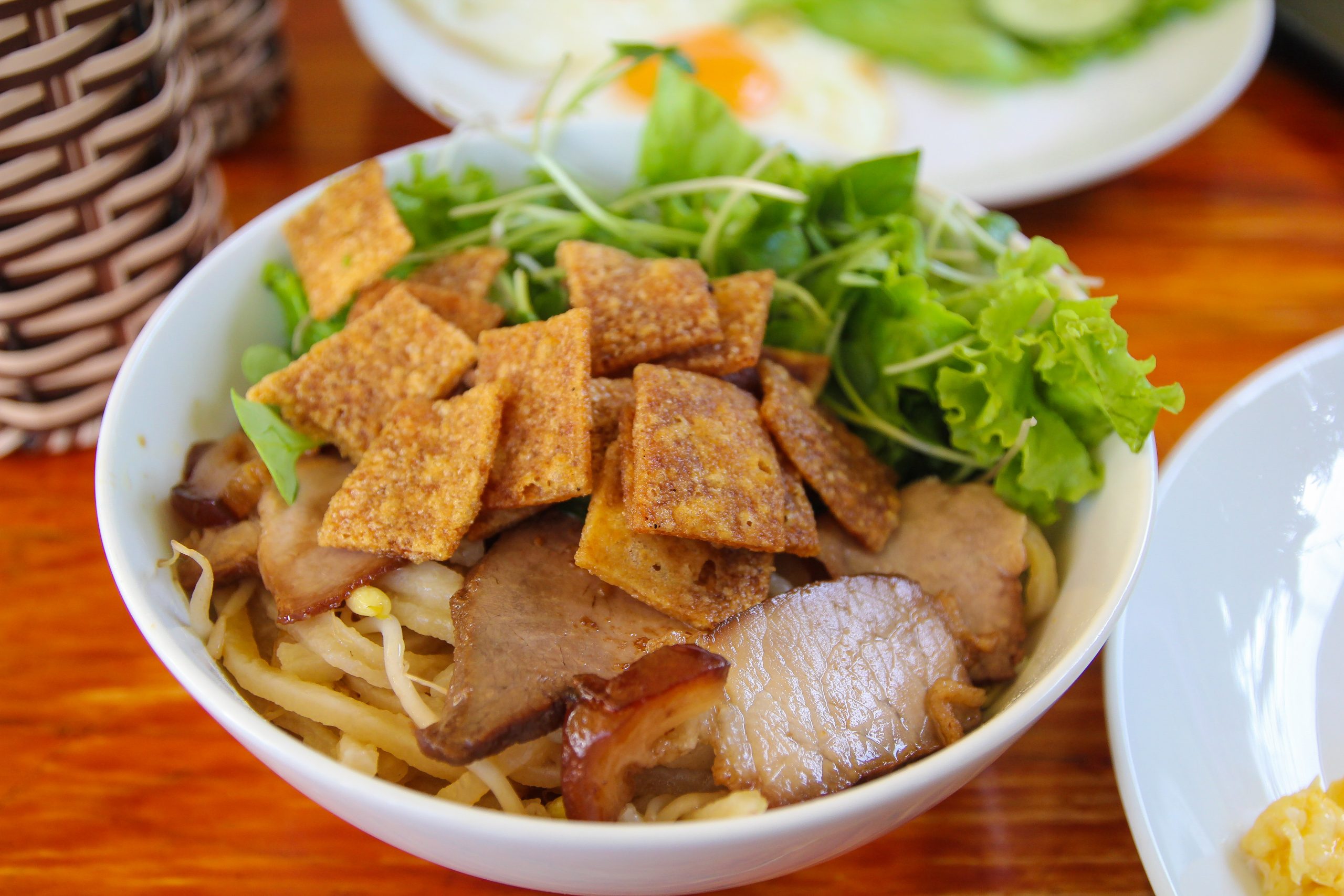
Where to try: Visit Thanh Cao Lau on Thai Phien Street for the most authentic version. Prices range from 30,000-50,000 VND per bowl.
2. Fried Wontons (Hoanh Thanh Chien)
These crispy fried wontons are Hoi An’s answer to nachos. Filled with seasoned pork and shrimp, they’re deep-fried until golden and served with a tangy tomato-based sauce topped with sautéed vegetables.
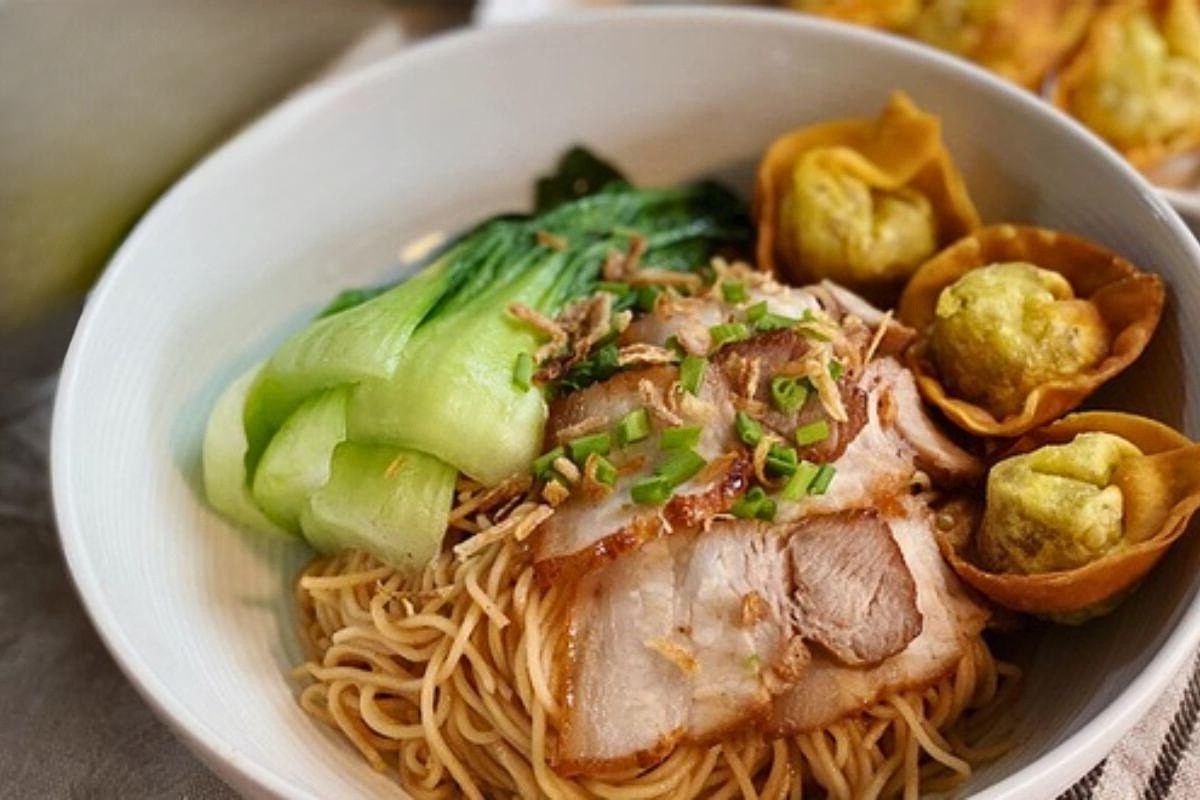
3. Mi Quang – Central Vietnam’s Pride
While Mi Quang originated in Quang Nam province, Hoi An’s version is particularly special. This turmeric-infused noodle soup comes with shrimp, pork, quail eggs, and is served with rice crackers and fresh herbs.
| Ingredient | Purpose | Unique Feature |
|---|---|---|
| Turmeric noodles | Base of the dish | Natural yellow color, no artificial coloring |
| Peanuts | Adds crunch | Locally grown in Quang Nam |
| Rice crackers | Texture contrast | Must be grilled over charcoal |
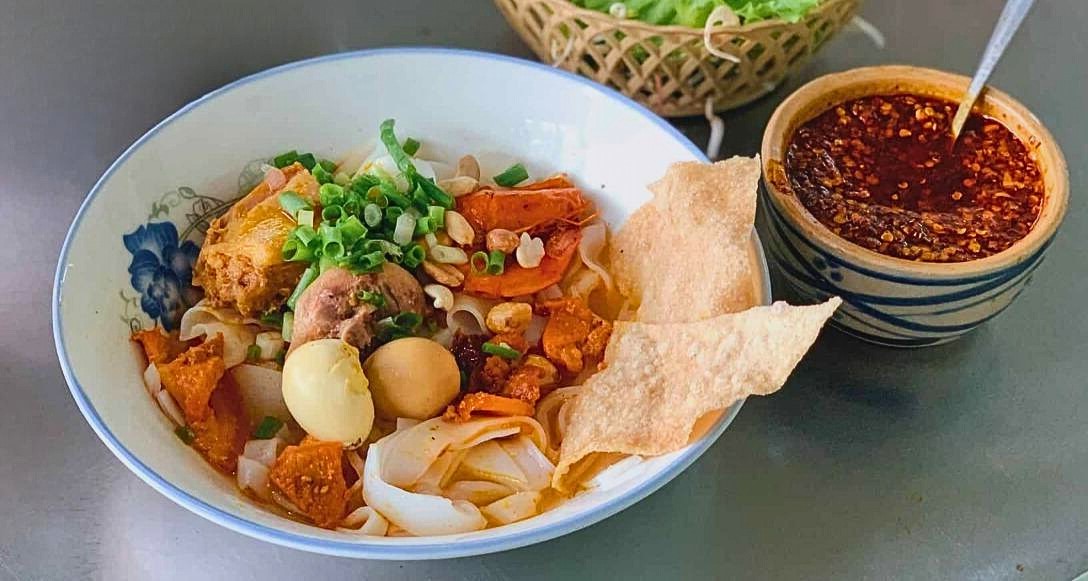
4. Hoi An Pancake (Banh Xeo)
While banh xeo exists throughout Vietnam, Hoi An’s version is smaller and crispier. These turmeric-tinted rice flour pancakes are filled with shrimp, pork, and bean sprouts, then wrapped in lettuce with herbs and dipped in fish sauce.
- Smaller size makes them easier to eat
- Extra crispy texture from the special batter recipe
- Served with unique Hoi An-style fish sauce
- Must be eaten immediately while hot and crispy
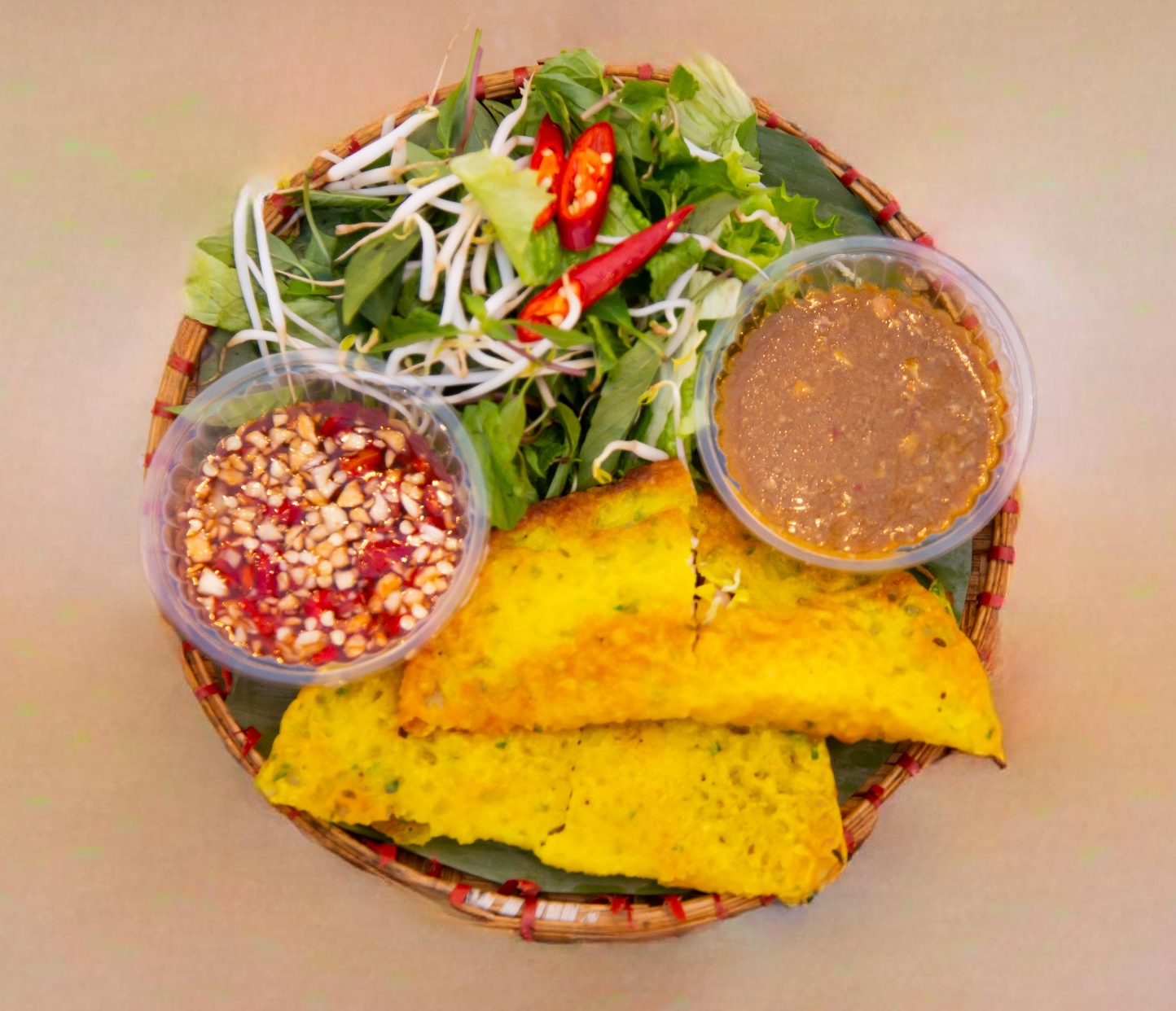
5. Banh Mi – Hoi An Style
Yes, banh mi is available throughout Vietnam, but Hoi An’s version is legendary. Lonely Planet once called Banh Mi Phuong “the best banh mi in Vietnam.” The secret? A perfect balance of crispy baguette, homemade pate, local herbs, and their special sauce.
Must-visit: Madam Khanh – The Banh Mi Queen has been serving her famous sandwiches for over 30 years.
6. White Rose Dumplings (Banh Bao Vac)
These delicate White Rose dumplings look like white roses floating in a pool of sweet fish sauce. Made from translucent rice paper and filled with shrimp or pork, they’re steamed to perfection and topped with crispy shallots.
Pro tip: Only one family in Hoi An holds the original recipe, passed down through generations. You can watch them being made at the White Rose restaurant on Hai Ba Trung Street.
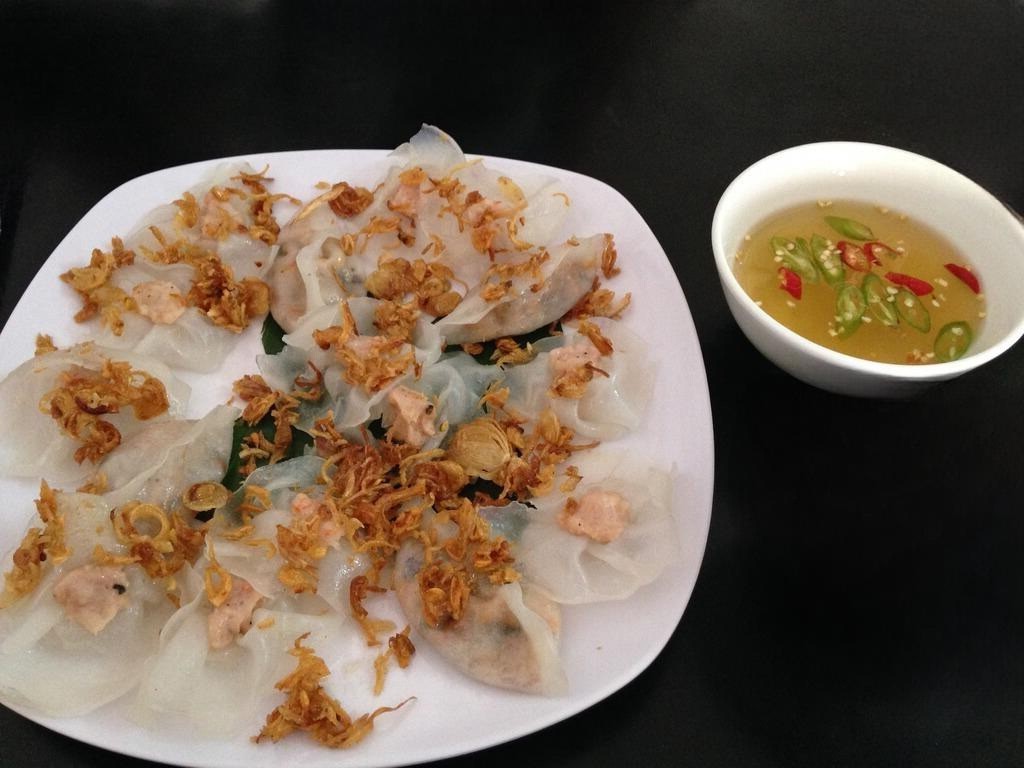
7. Grilled Pork Skewers (Nem Nuong)
Nem Nuong showcases Hoi An’s grilling expertise. These seasoned pork skewers are grilled over charcoal and served with rice paper, fresh vegetables, and herbs. Roll them yourself and dip in the special peanut-hoisin sauce.
8. Bánh Đập: Crispy Rice Paper
Bánh đập is a simple but delicious dish, made with two types of rice crackers. One is thin and crispy, and the other is thick and soft. The dish is served with a dipping sauce, made with fish sauce, sugar, lime juice, garlic, and chili, and a plate of fresh herbs and lettuce. To eat Bánh đập, you can use your hands to clap the two rice crackers together and break them into pieces. Then, dip them in the sauce and enjoy the crunchy and chewy crackers with the fresh.
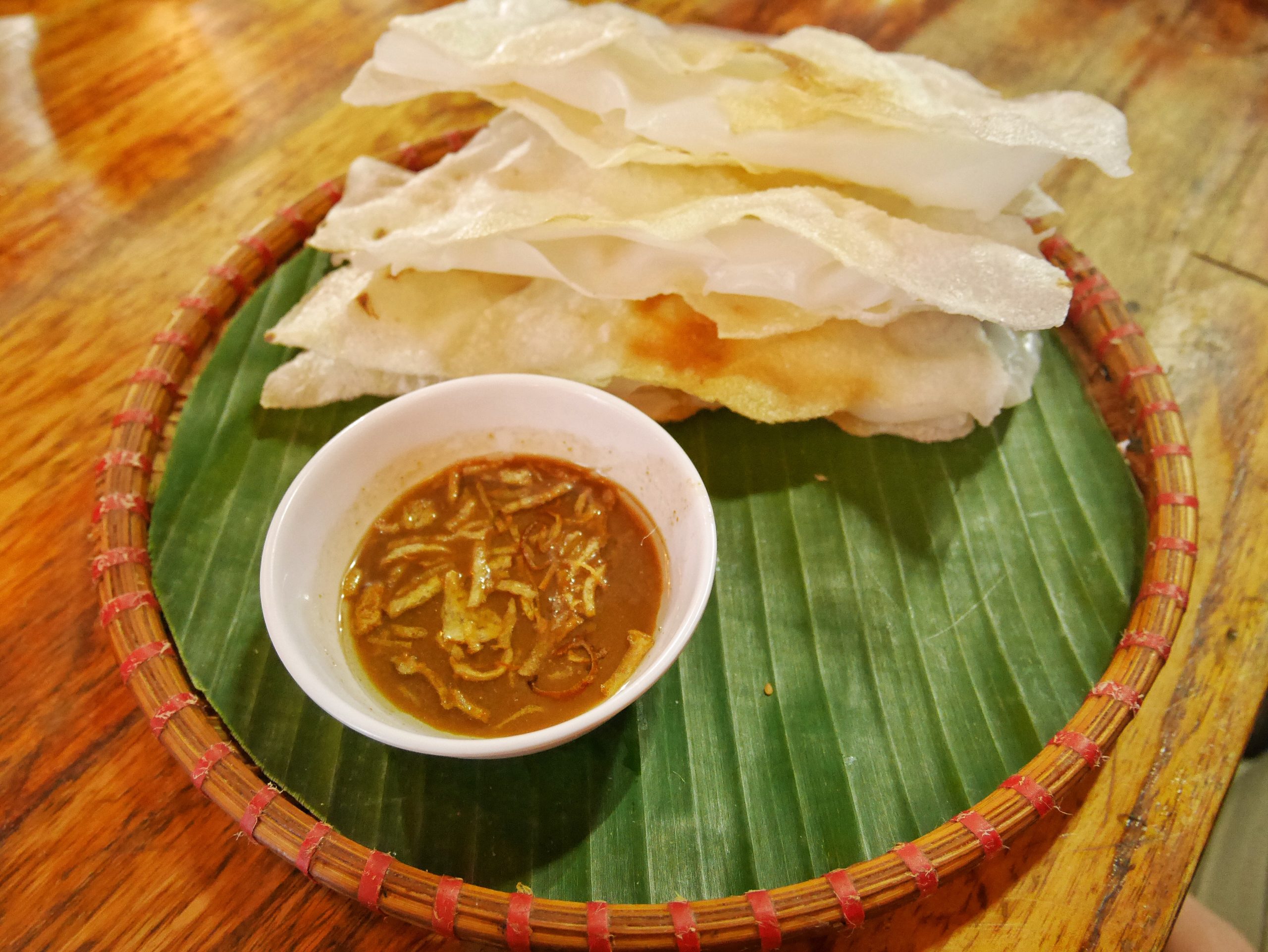
9. Chè Mè Đen: Black Sesame Sweet Soup
Chè mè đen is a sweet soup originating from China. During the cultural exchange process of wealthy foreign merchants in Hoi An, this type of tea appeared here. Natural ingredients used to make Hoi An black sesame sweet soup include black sesame, cassava starch, glutinous rice flour, and sugar. Black sesame is soaked until soft, then pureed and cooked with other ingredients to create a rich, nutty, and sweet flavor.
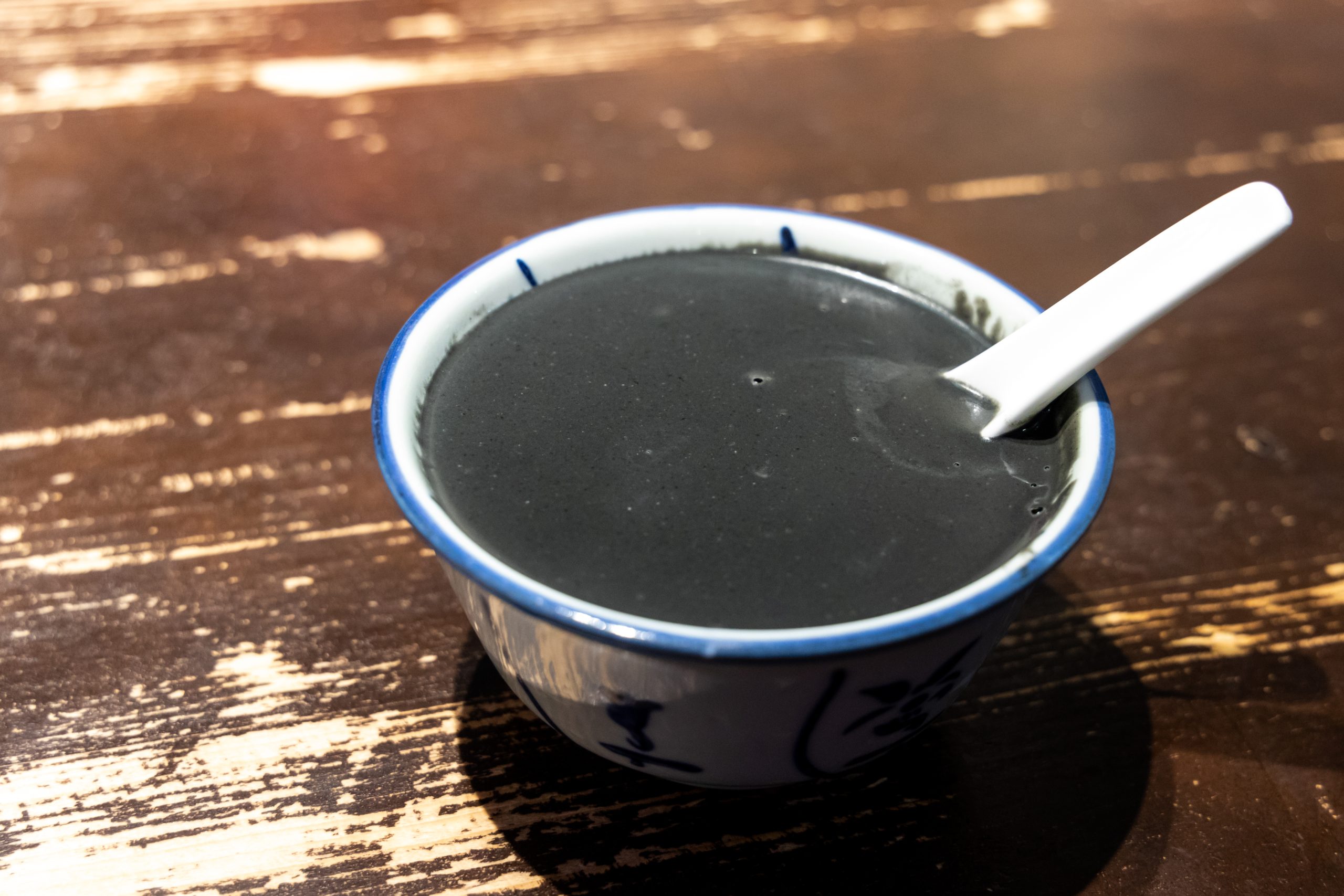
10. Tào phớ: Tofu
Tofu is a delightful dessert consisting of fresh soy milk, sugar, and ginger syrup, served in a small bowl with a wooden spoon. Tofu pudding has a smooth, creamy texture and a delicate soy flavor, complemented by spicy ginger. It’s an ideal way to cool off on a hot day or to end a meal with Hoi An’s famous dishes.
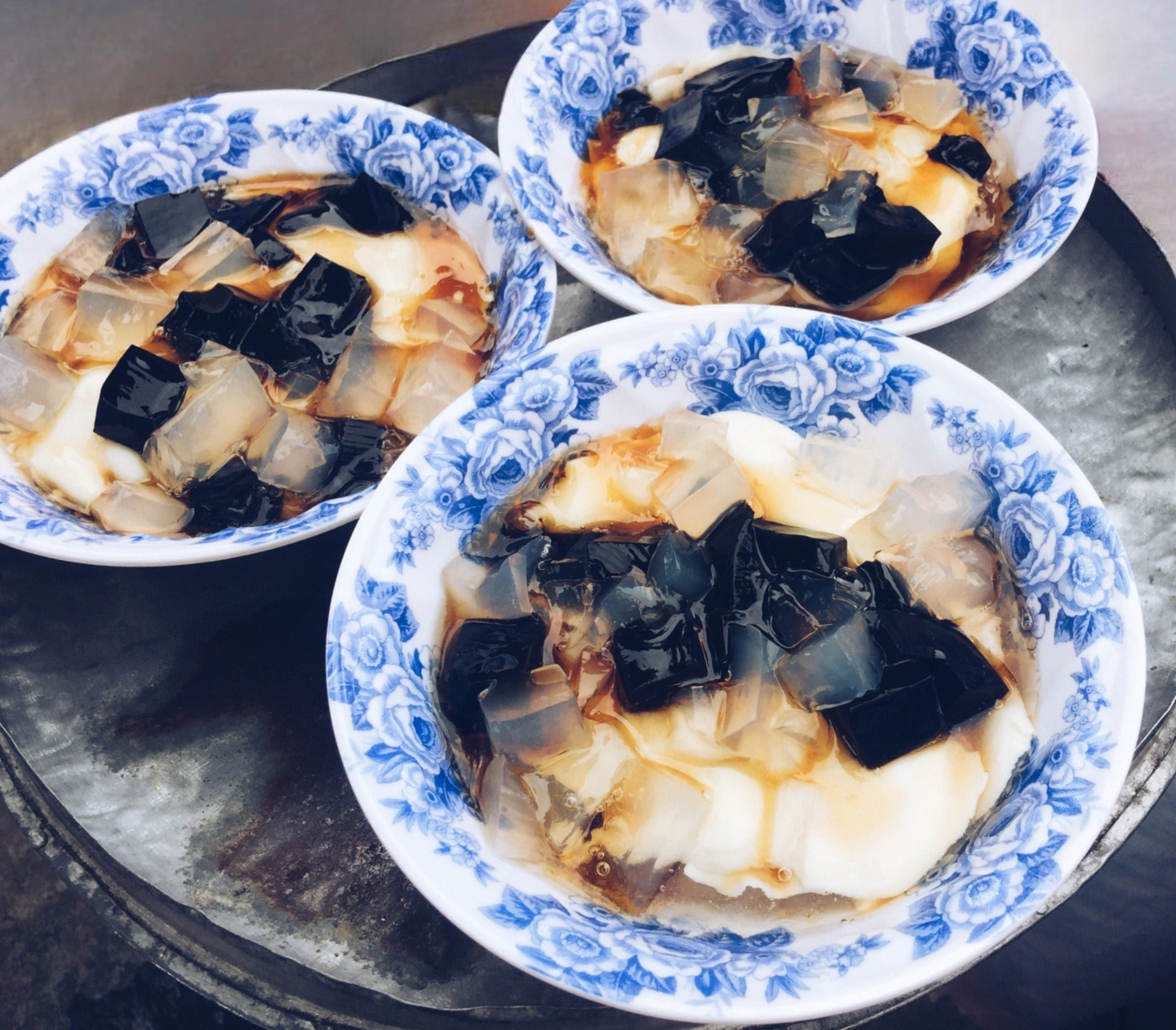
Best Food Tours and Experiences in Hoi An
Want to experience all these dishes like a local? Consider joining a guided food tour in Hoi An. Here are your best options:
- Morning Market Tour: Start at 7 AM to see vendors preparing fresh ingredients
- Evening Street Food Walk: Best from 5-9 PM when the night market comes alive
- Cooking Class: Learn to make these dishes at Tra Que Village
- Bicycle Food Tour: Cover more ground and burn calories between meals
Where to Find the Best Hoi An Food
Central Market (Cho Hoi An): The heart of local food culture. Visit early morning for the freshest ingredients and authentic breakfast options.
Night Market: An island transforms into a food paradise every evening. Try multiple dishes at budget-friendly prices.
Ancient Town Streets: Hidden gems tucked away in centuries-old buildings. Look for places packed with locals.
Practical Tips for Food Lovers in Hoi An
Best time to eat: Locals eat cao lau for breakfast (7-9 AM), while evening (5-8 PM) is perfect for street food exploration.
Budget planning: Street food costs 20,000-50,000 VND per dish. Restaurants range from 50,000-150,000 VND per meal.
Dietary considerations: Vegetarian versions of most dishes are available. Just say “an chay” (vegetarian) when ordering.
“The secret to enjoying Hoi An food is to come hungry and stay curious. Every corner holds a culinary surprise.” – Nomadic Matt
Frequently Asked Questions About Hoi An Food
Q: Is Hoi An food spicy?
A: Generally no. Hoi An cuisine focuses on balanced flavors rather than heat. Chili is usually served on the side.
Q: Can I find these dishes outside Hoi An?
A: While some dishes like mi quang are available elsewhere, authentic cao lau and white rose dumplings are unique to Hoi An due to special ingredients and preparation methods.
Q: What’s the best food tour in Hoi An?
A: SAMTOUR VIETNAM’s evening food tour covers all must-try dishes with expert local guides.
Plan Your Hoi An Food Adventure
Now that you know the top 10 dishes to try in Hoi An, it’s time to plan your culinary adventure. Whether you’re a street food enthusiast or prefer sit-down restaurants, Hoi An’s food scene has something special waiting for you.
Remember, the best way to experience Hoi An cuisine is with an open mind and empty stomach. Each dish tells a story of this ancient town’s rich history and cultural fusion. From the unique cao lau noodles to the delicate white rose dumplings, every bite is a journey through time.
Ready to taste the flavors of Hoi An? Contact SAMTOUR VIETNAM to book your food tour and discover why Condé Nast Traveler calls Hoi An “one of Asia’s greatest culinary destinations.”
Don’t just visit Hoi An – taste it, savor it, and take home memories that will last a lifetime.




